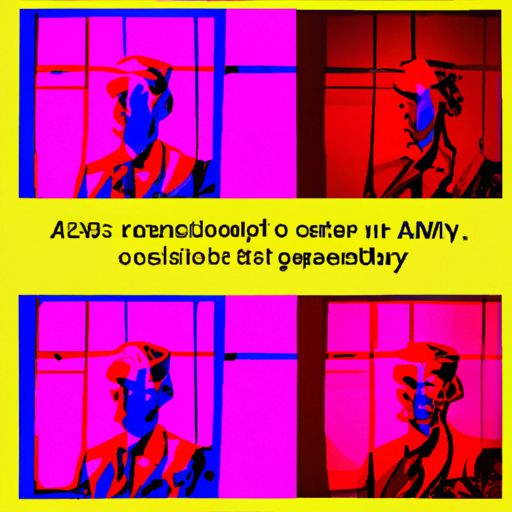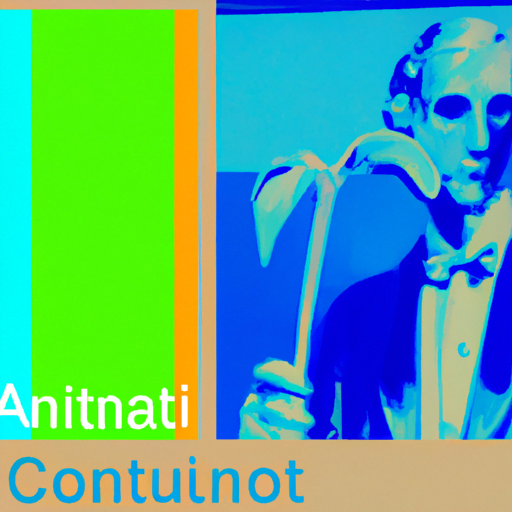
-
Table of Contents
- Ethical Considerations in AI-Generated Graphics
- The Rise of AI-Generated Graphics
- The Ethical Implications
- 1. Intellectual Property
- 2. Plagiarism and Originality
- 3. Bias and Discrimination
- 4. Transparency and Accountability
- Addressing the Ethical Challenges
- 1. Clear Guidelines and Regulations
- 2. Ethical Training of AI Algorithms
- 3. Human Oversight and Collaboration
- 4. Transparent and Explainable AI
- Conclusion
Ethical Considerations in AI-Generated Graphics

Artificial Intelligence (AI) has revolutionized various industries, including graphic design. AI-generated graphics have become increasingly popular due to their ability to create visually stunning and unique designs. However, as AI continues to advance, it raises important ethical considerations that need to be addressed. This article explores the ethical implications of AI-generated graphics and the challenges they present.
The Rise of AI-Generated Graphics
In recent years, AI has made significant progress in the field of graphic design. AI algorithms can now generate images, logos, illustrations, and even entire websites. These algorithms are trained on vast amounts of data, allowing them to learn patterns and generate designs that mimic human creativity.
AI-generated graphics offer several advantages. They can save time and effort for designers by automating repetitive tasks. They can also provide inspiration and generate ideas that may not have been considered by human designers. Additionally, AI-generated graphics can be personalized to meet the specific needs and preferences of individual users.
The Ethical Implications
While AI-generated graphics offer numerous benefits, they also raise ethical concerns that need to be carefully considered. The following are some of the key ethical implications associated with AI-generated graphics:
1. Intellectual Property
One of the primary concerns with AI-generated graphics is the issue of intellectual property. Who owns the rights to AI-generated designs? Is it the AI algorithm developer, the user who trained the algorithm, or the designer who fine-tuned the output? These questions become even more complex when AI algorithms are used to create commercial designs or when multiple AI algorithms are involved in the creative process.
Case Study: In 2019, a group of artists used an AI algorithm to generate a portrait that sold for $432,500 at an auction. The question of who owned the rights to the artwork sparked a debate about the role of AI in the creative process and the ownership of AI-generated designs.
2. Plagiarism and Originality
AI algorithms are trained on existing designs and patterns, which raises concerns about plagiarism and originality. Can AI-generated graphics be considered original works of art? How can designers ensure that AI-generated designs do not infringe on existing copyrights or trademarks?
Case Study: In 2020, a designer accused a major clothing brand of using an AI-generated design that closely resembled their original artwork. The case highlighted the challenges of determining the originality of AI-generated graphics and the potential for copyright infringement.
3. Bias and Discrimination
AI algorithms are only as good as the data they are trained on. If the training data contains biases or discriminatory patterns, the AI-generated graphics may also exhibit these biases. This raises concerns about the perpetuation of stereotypes, discrimination, and inequality through AI-generated designs.
Case Study: In 2015, Google’s image recognition algorithm labeled images of black people as gorillas, highlighting the racial biases present in AI algorithms. Similar biases can manifest in AI-generated graphics, perpetuating harmful stereotypes.
4. Transparency and Accountability
AI algorithms are often considered black boxes, meaning that their decision-making processes are not easily understandable by humans. This lack of transparency raises concerns about accountability. Who is responsible if an AI-generated design violates ethical standards or causes harm? How can designers ensure that AI algorithms are making ethical decisions?
Case Study: In 2018, an AI chatbot developed by Microsoft called Tay started making racist and offensive remarks on Twitter. The incident highlighted the need for transparency and accountability in AI systems.
Addressing the Ethical Challenges
As AI-generated graphics become more prevalent, it is crucial to address the ethical challenges they present. The following are some strategies that can help mitigate these challenges:
1. Clear Guidelines and Regulations
Developing clear guidelines and regulations regarding the ownership, use, and attribution of AI-generated graphics can help address the intellectual property concerns. These guidelines should consider the involvement of AI algorithms in the creative process and ensure that all parties involved are appropriately recognized and compensated.
2. Ethical Training of AI Algorithms
Training AI algorithms on diverse and unbiased datasets can help reduce the risk of perpetuating biases and discrimination in AI-generated graphics. It is essential to ensure that the training data is representative of different cultures, races, genders, and perspectives.
3. Human Oversight and Collaboration
While AI algorithms can generate impressive designs, human oversight and collaboration are crucial to ensure ethical standards are met. Designers should work alongside AI algorithms to fine-tune the output, verify originality, and ensure that the designs align with ethical guidelines.
4. Transparent and Explainable AI
Developing AI algorithms that are transparent and explainable can help address concerns about accountability. By understanding how AI algorithms make decisions, designers can identify and rectify any ethical issues that may arise. This transparency can also help build trust with users and stakeholders.
Conclusion
AI-generated graphics have the potential to revolutionize the field of graphic design. However, it is essential to address the ethical considerations associated with these advancements. Intellectual property, plagiarism, bias, and transparency are just a few of the challenges that need to be carefully navigated. By implementing clear guidelines, ethical training, human oversight, and transparent AI systems, we can ensure that AI-generated graphics are not only visually stunning but also ethically responsible.
As AI continues to evolve, it is crucial to have ongoing discussions and collaborations between designers, AI developers, and policymakers to establish ethical frameworks that protect the rights and well-being of all stakeholders involved in the creation and use of AI-generated graphics.
